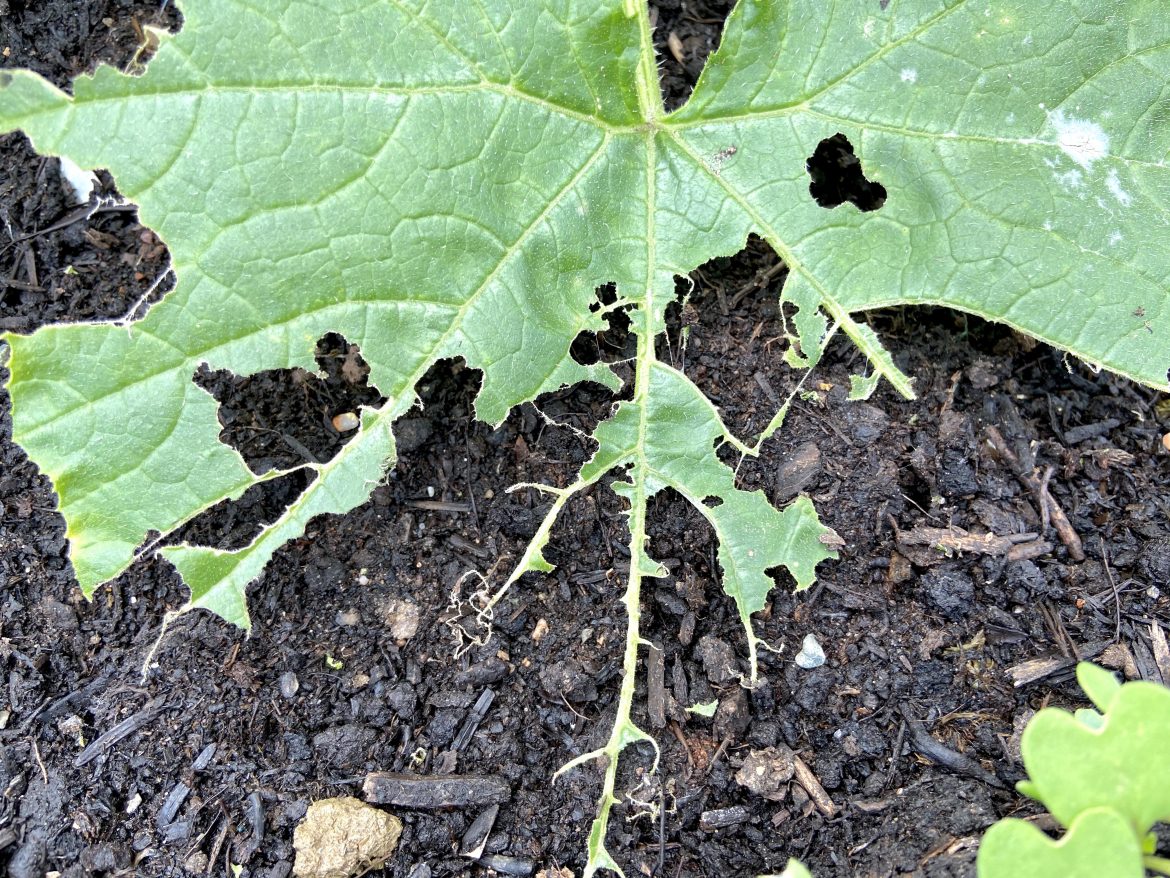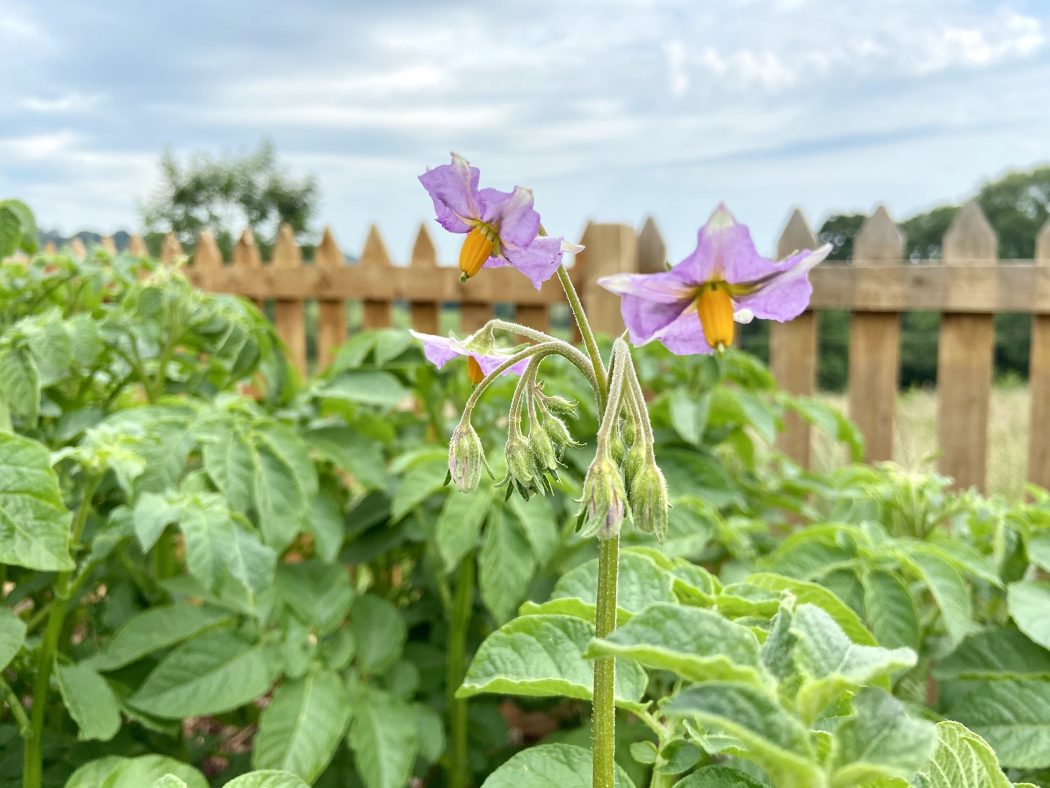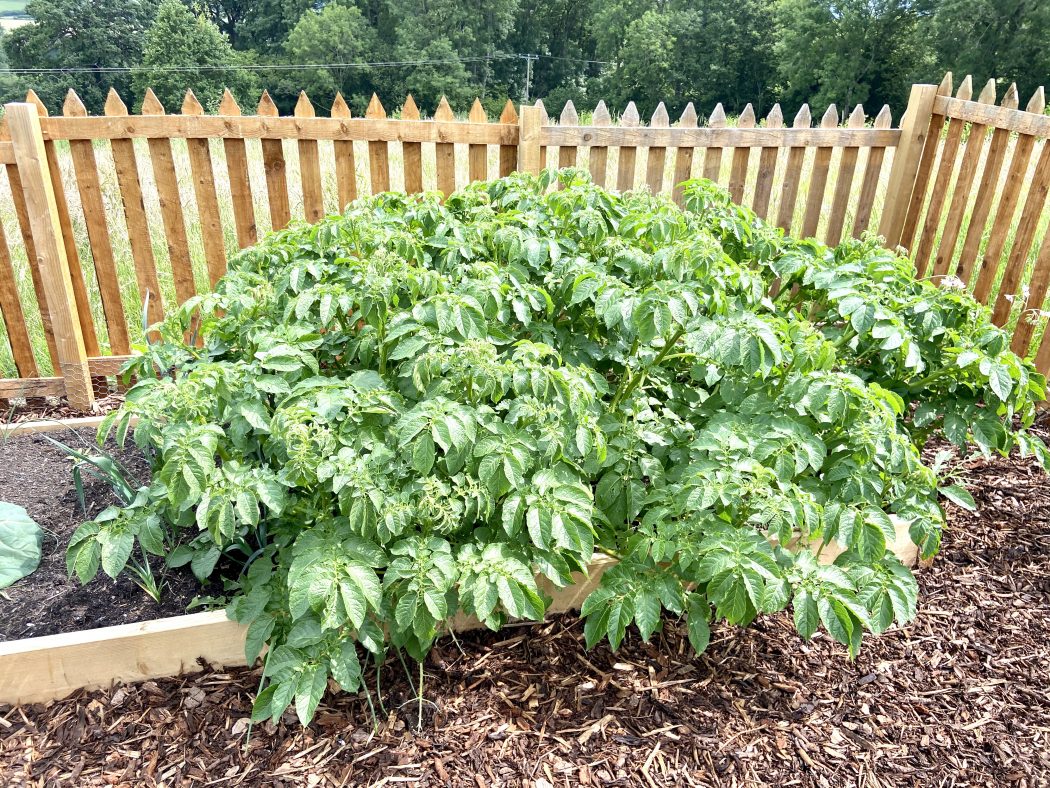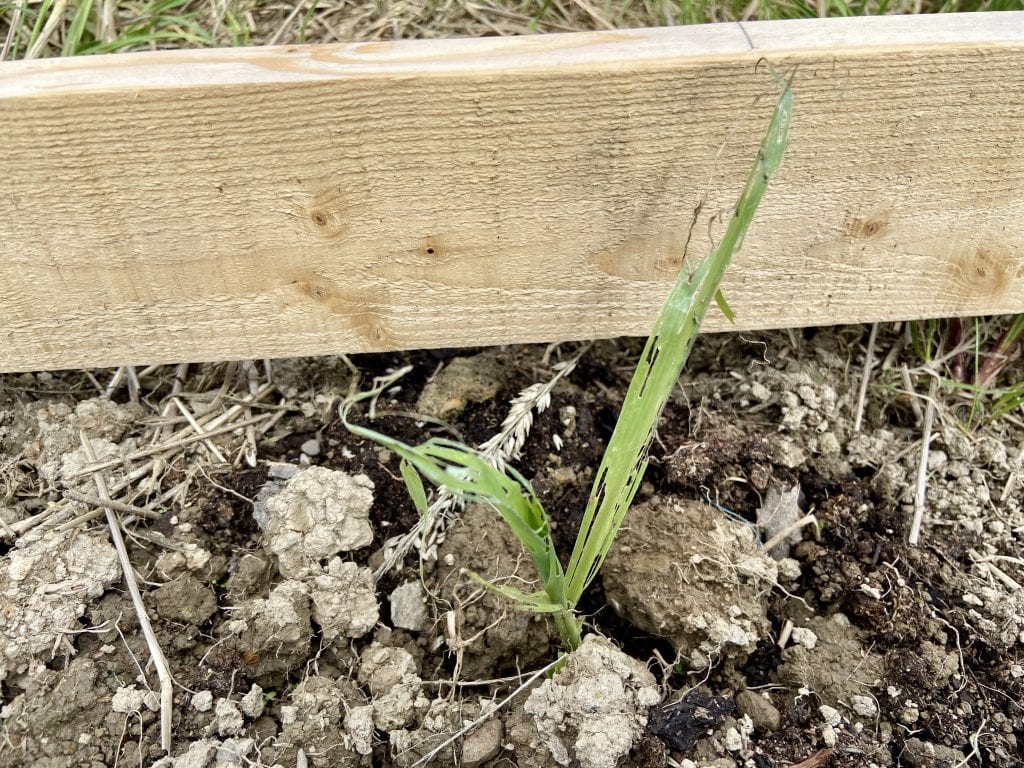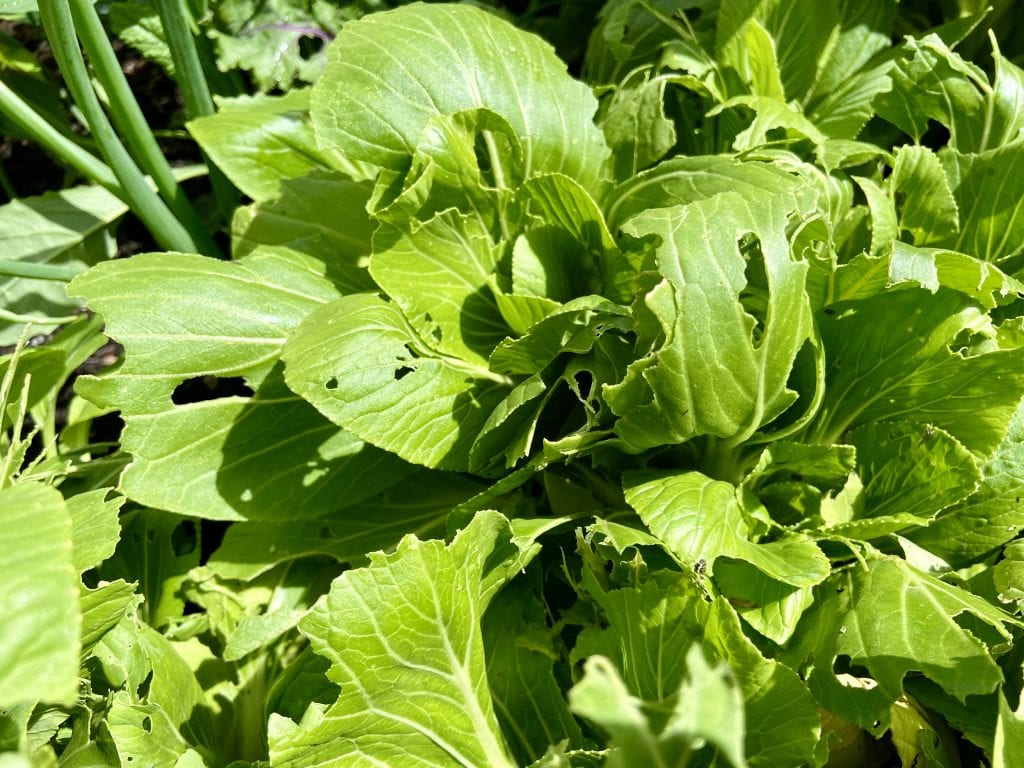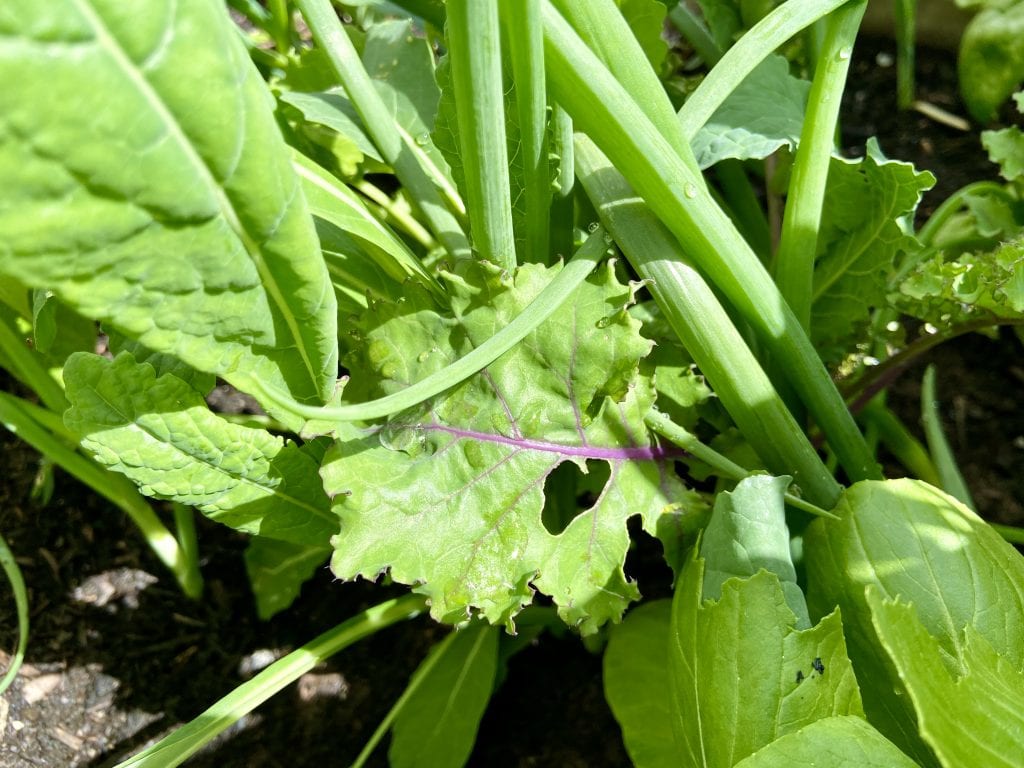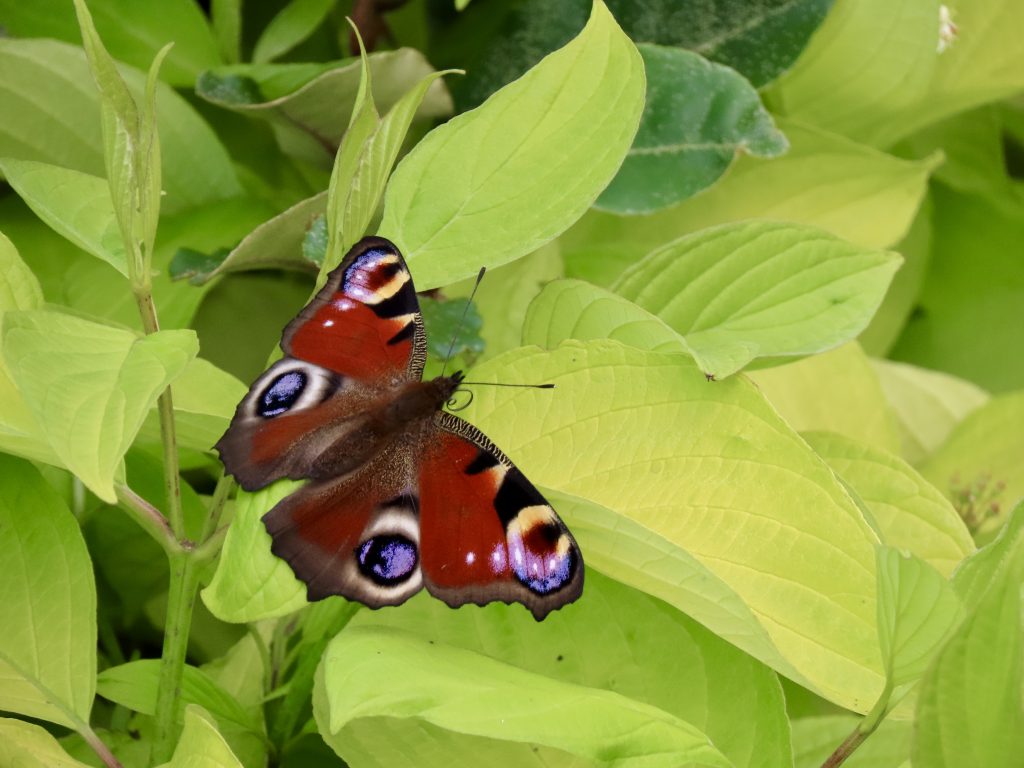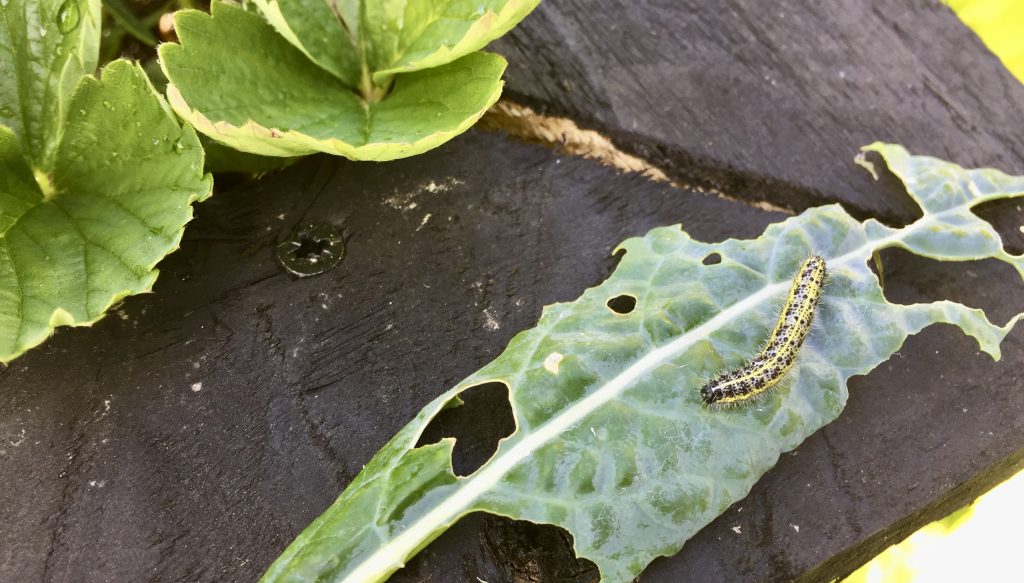Growing your own vegetables is filled with satisfaction when you pick and harvest food, but the process is equally stressful for first time gardeners like us, and I’ll briefly touch on the pests that are currently causing me the greatest angst.
Wireworm
The first encounter we had with a potential headache on our new veg patch was with wireworms. To fight them in a sustainable and environmentally friendly manner we purchased nematodes, but we’ll only really know in October whether they were successful or not.
Frankly, the jury is out on this one because I pulled some radishes out this week, and came across a wireworm.
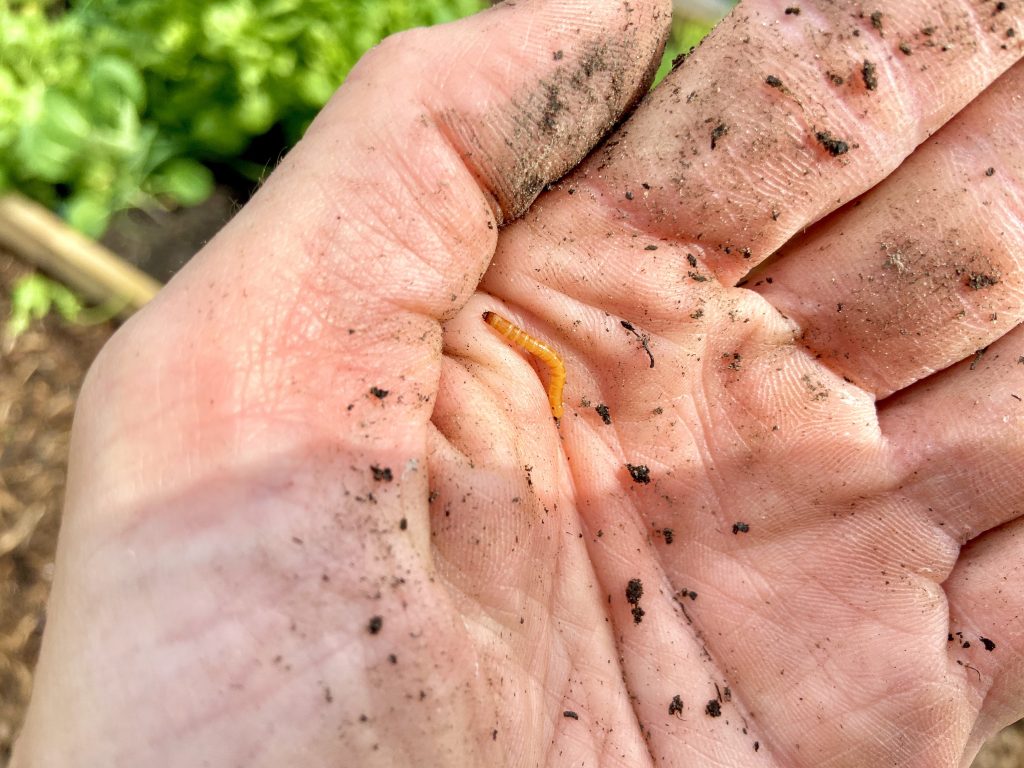
And it’s actually really, really sad to think that these little worms are causing damage to our tubers because the potato plants are looking glorious. They’re presently starting to flower, but we will be snipping them off because we want the tubers to develop. Let’s just hope the wireworms leave some potatoes for us to enjoy and don’t ruin them all.
Slugs
Just as I was resigning myself to defeat against the diminutive wireworm, I took solace from the fact that our leafy vegetables growing above ground were doing exceptionally well.
Throughout May (the hottest and driest on record) we watered everything manually, and our veg was establishing and growing splendidly. The calendar flipped over into June, and we had a fortnight of cloudy, wet, humid weather which did wonders for the accelerated growth of our veg.
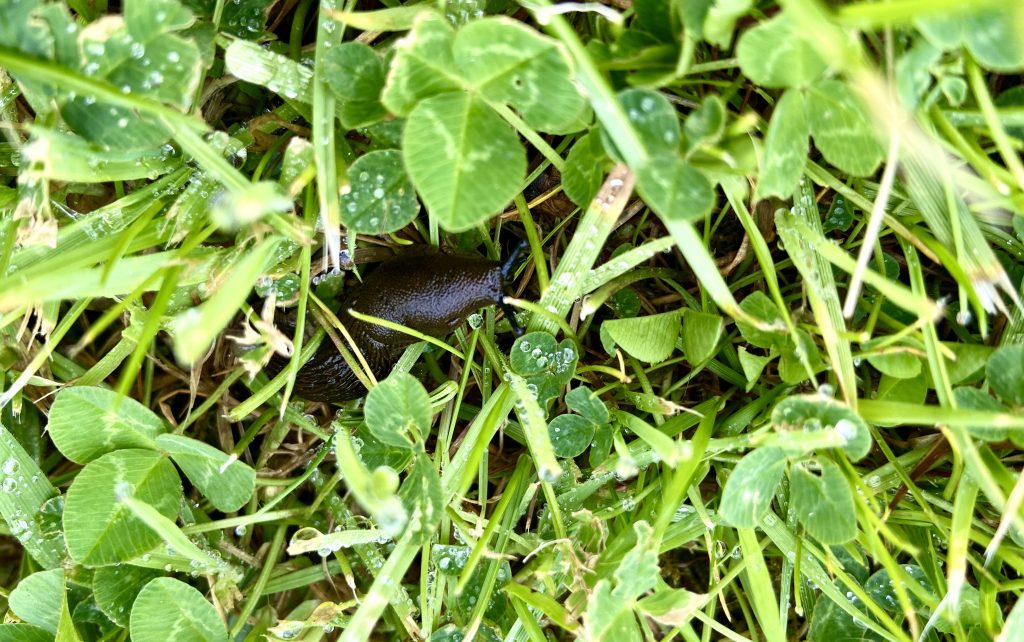
This weather, however, brought on an onslaught of slugs. We had back-to-back days of rain where we couldn’t inspect our raised beds, and during that 48-hour period the devastation the slugs caused was ridiculous as they decimated our pak choi and worked over our spinach and lettuce.
It took four days of hand picking to get rid of most of them. Nematodes are a potential consideration in the battle, but the Nemaslug product is not available in the UK until the end of June. We are really hoping it’ll be back in stock.
The slugs have even gone after rough courgette and pumpkin leaves, as well as our newly planted corn. Most annoyingly, they’ve destroyed one of my favorite cucamelon plants. That genuinely made me very, very angry.
If we are able to get our hands on it, it’ll be interesting to see if nematodes work, because they’ll be targeted on pests we can actually see.
Caterpillars
There’s no respite. Last year our kale was attacked by caterpillars and I put a reminder in my iPhone calendar to be vigilant of butterflies.
And they’re out in huge numbers at the moment. I watched them while working on the patch today and they have a serious homing sensor. They flutter around ‘aimlessly’ giving the runner beans a pass, fly over the potatoes and zero in on our kale, brussel sprouts and broccoli.
So in the weeks ahead, I’ll be on butterfly egg and caterpillar watch. From last year’s experience this should be the easiest of the three pests to deal with. It’s just a matter of being watchful and picking off the caterpillars by hand.
This was last year’s pattern: the butterflies were out in late June (as they are now) and the kale was attacked in August. I’ll try and pre-empt any attack by getting rid of the eggs before they have a chance to hatch.
